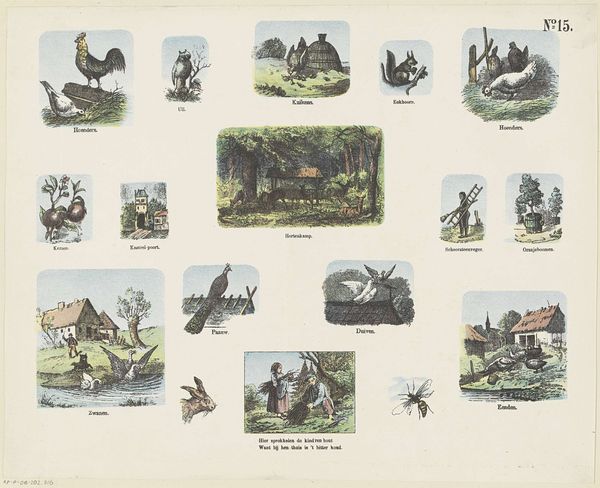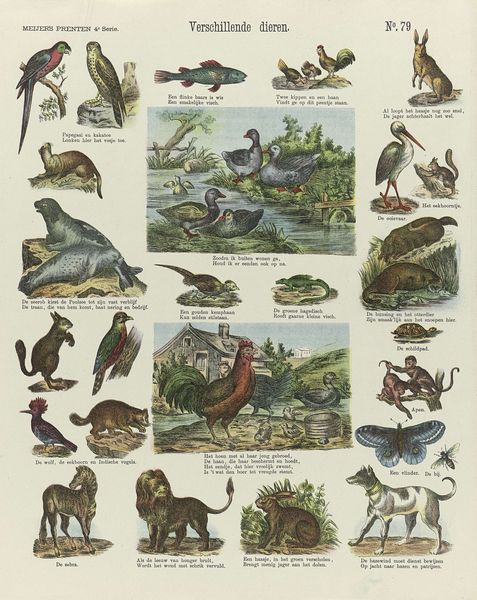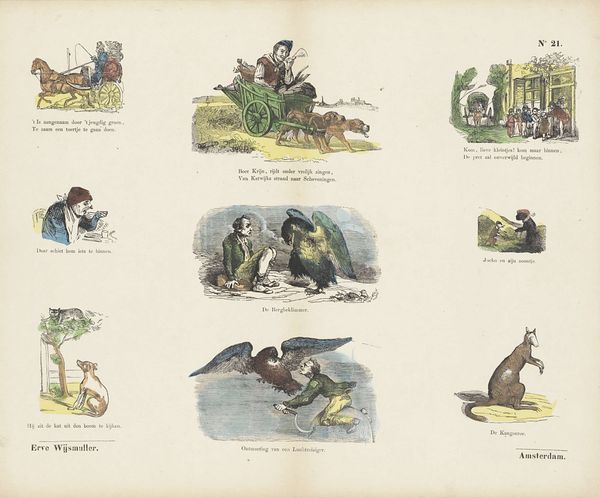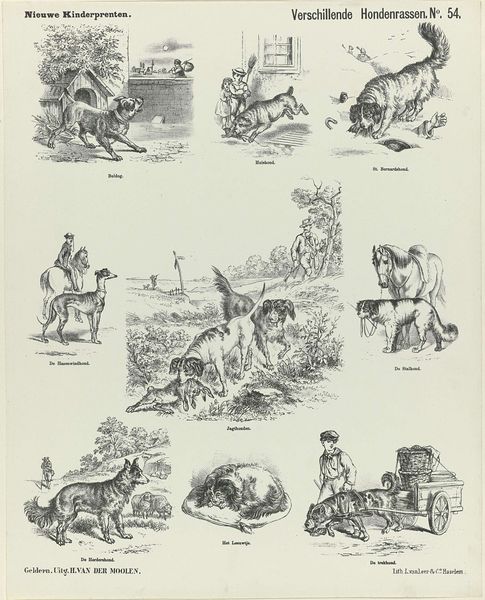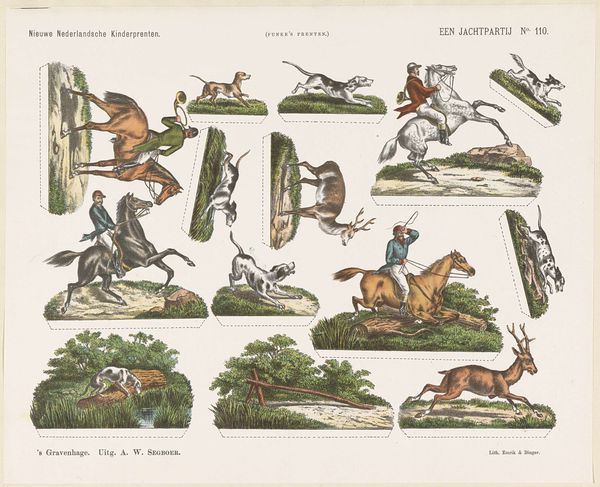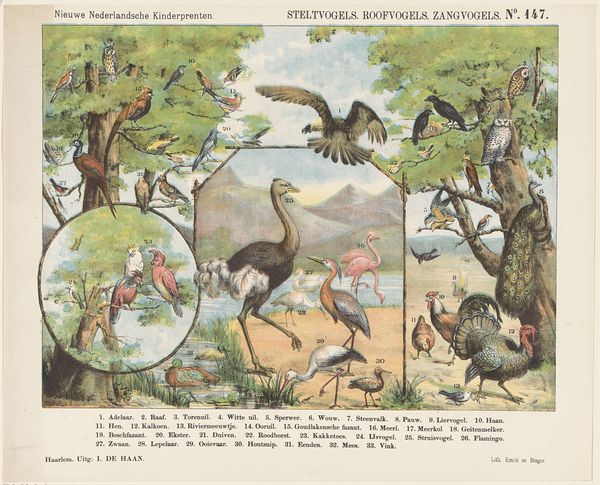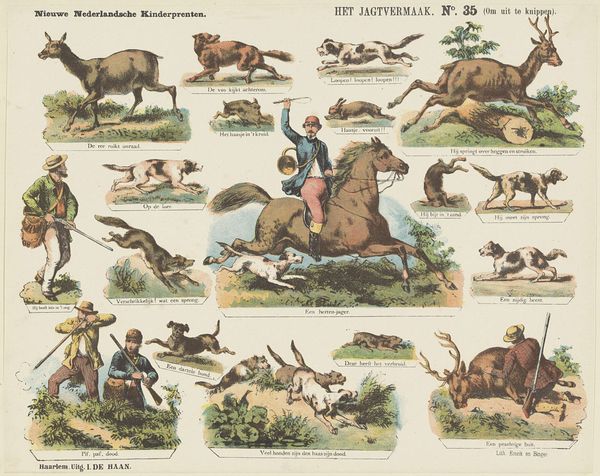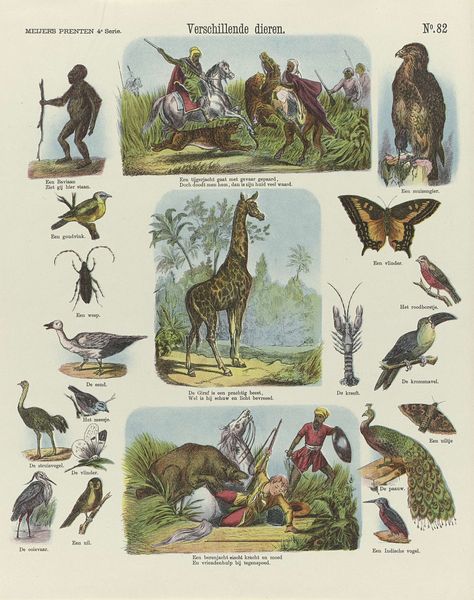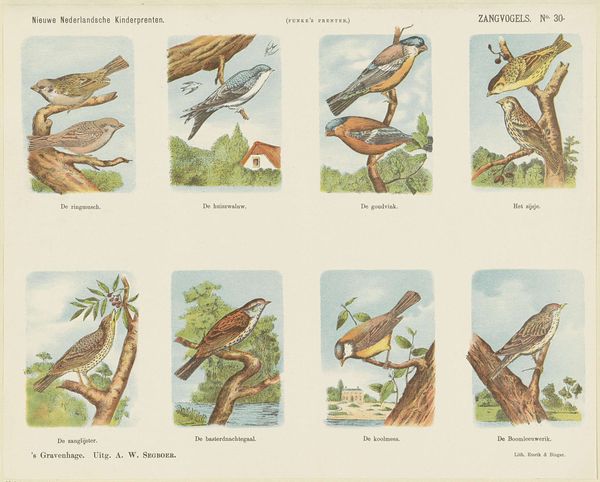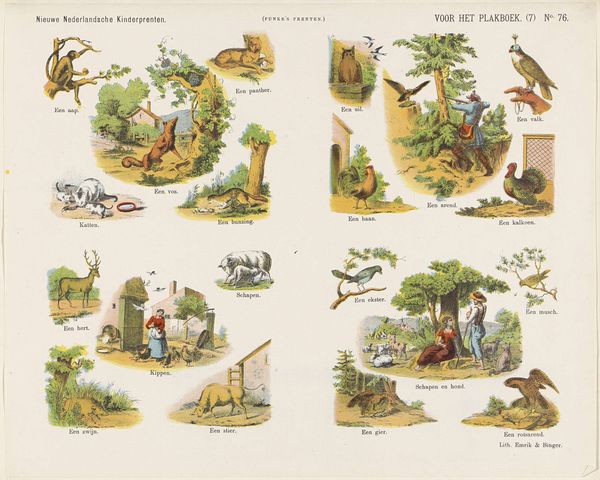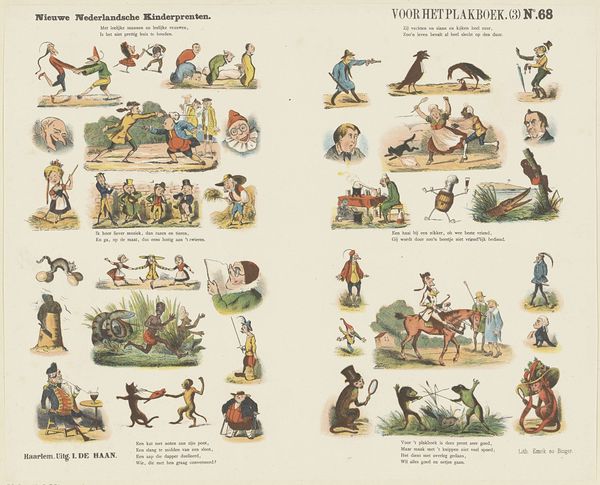
Dimensions: height 344 mm, width 425 mm
Copyright: Rijks Museum: Open Domain
Curator: Today we are observing "Vogels", a lithograph drawing with watercolor and ink on paper made by Jan de Haan between 1875 and 1903. The piece gathers various birds on a single page. What’s your initial reaction? Editor: The composition feels ordered, almost like a patterned textile sample, yet with an oddly haunting undercurrent. Each bird seems isolated, despite being presented together. Curator: Interesting. From a formal standpoint, I notice the restrained color palette; earth tones punctuated by hints of brighter pigments serve to create a cohesive viewing experience, organizing the page’s symbolic structure. Editor: Yes, and consider the semiotics of the birds themselves. Ducks, chickens, robins – each carries cultural weight, speaking to cycles of life, family, even human society itself. There's a strong evocation of nature's harmony but perhaps even the artificial containment of it. Curator: Exactly! The very act of compiling these species suggests an underlying system, attempting to codify and compartmentalize our natural environment. It is representative of Ukiyo-e style of artwork and the piece draws visual vocabulary for viewers from that space. Editor: Perhaps a naive approach now, but within this almost scientific arrangement of types, each creature is imbued with emotional possibility. Are we invited to view these birds through a romantic lens, appreciating their beauty, or does it serve another purpose entirely? Are we celebrating them or othering them? Curator: It becomes evident in its composition the artistic act mirrors the broader human effort to organize and classify nature. Each bird’s unique shape, texture, and pattern speaks to an aesthetic order imposed on untamed nature, reflecting our own intellectual inclinations. Editor: I see something else. Given it's titled "Vogels," Dutch for "Birds," is there something about naming here? Labeling these figures tethers our comprehension of their nature. Their categorization emphasizes their role in cultural memory and imagination. Curator: In conclusion, "Vogels" is more than an objective display of species; rather, the print uses these biological forms to explore modes of human thought and visual systems. Editor: Ultimately, this lithograph resonates through its quiet symbolic language, inviting reflection on how we connect with and give shape to the living world around us.
Comments
No comments
Be the first to comment and join the conversation on the ultimate creative platform.
